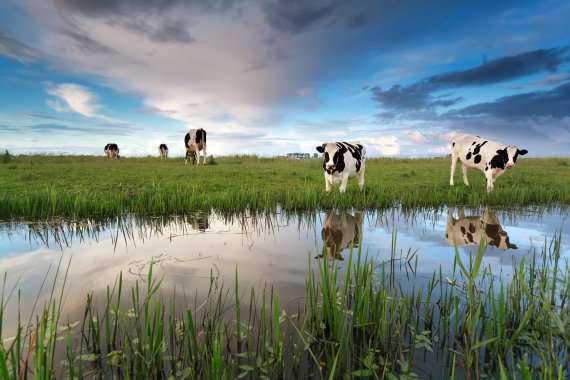<photo: On certain kinds of soils, livestock farming is a sustainable option, argues doctoral researcher Hannah van Zanten.>
In our intensive livestock system, pigs and chickens are mainly fed on high-value feed such as soya and maize, whereas cattle also eat low-value feed such as grass. Yet people often point at cows as big environmental polluters because they take up a lot of land and they emit methane. Is that fair, Hannah van Zanten wondered. ‘We humans compete for land with pigs and chickens but not with cattle which eat grass on marginal land that is less suitable for arable farming. I wanted to bring that into the picture in order to identify optimal food production methods.’ And this led to the Land Use Ratio (LUR).
For this ratio you first calculate how much land is needed to produce one kilo of protein from a particular livestock farming system. Then you look at how much plant protein you could have produced on the land. After that you divide the number of kilos from plant production by the kilos of protein from animal production. ‘If the figure is higher than 1, plant production is more efficient than animal production. If the land use ratio is less than 1, animal production is more efficient.’
The production of pork on a soya-based diet results in a LUR of 4.5. ‘So you can produce about 4.5 times as much protein if you use that land for plant production,’ says Van Zanten. ‘Dairy farming on sandy soils has a ratio of 2.2 but cows in areas with peaty soil score a ratio of 0.7. This shows that cattle can contribute to a sustainable global food supply.’

